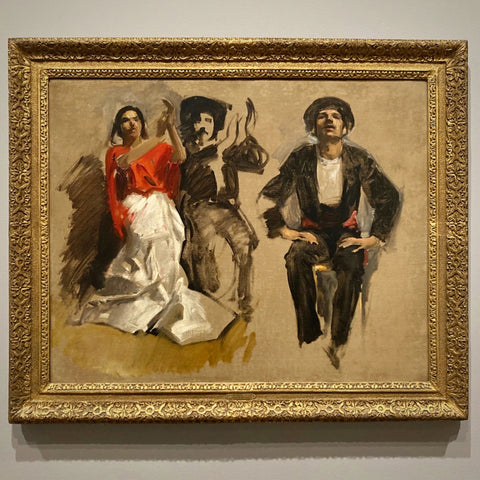
The Fogg Art Museum at Harvard University is wonderful. It's not very large—in fact, it is quite manageable for a two hour visit. But the collection includes works by many of the greats: studies and lesser-known paintings.
Shown above, a study of the seated figures for John Singer Sargent's El Jaleo, 1882 (the final painting which hangs in the Isabella Stewart Gardner museum, also in Boston). Sargent is my favorite "modern era" artist. With such economy, spontaneity and confidence—with just a few brush strokes—the 26 year old artist was able to paint a white skirt, conveying brilliantly how the fabric drapes over the woman's legs beneath and how the light plays off of the folds of her garment. Genius!
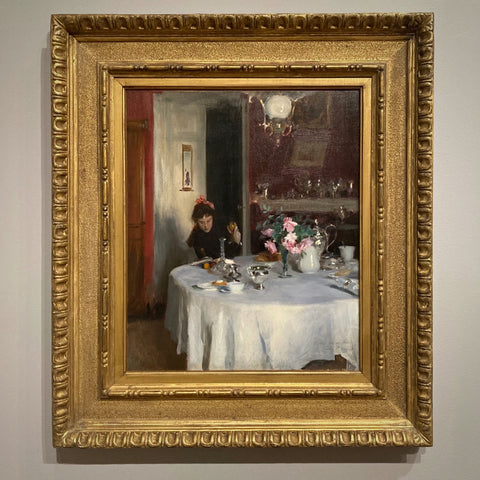
Shown above, another painting by Sargent, painted when he was 28 years old. Here he captures his sister, Violet, at the family breakfast table (in the South of France), peeling an orange while she reads her book.

To me, a little Claude Monet always seems to go a long way. And then I happen upon one of his works which defies my expectations. This still life painting, titled Red Mullets (c. 1870), is enchanting in its modesty—and the beauty conjured from such a mundane subject.
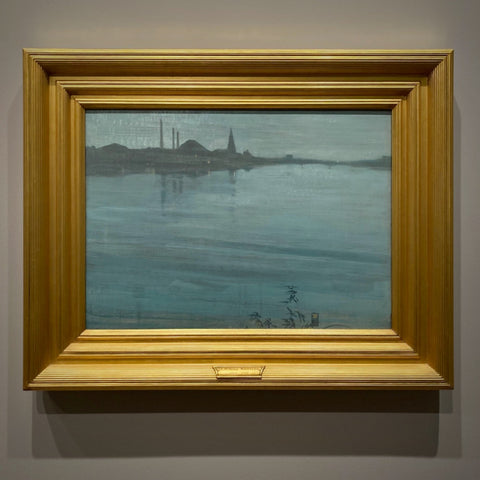
The Fogg Museum at Harvard also holds a collection of paintings by James McNeill Whistler. Shown above, Nocturne in Blue and Silver (c. 1871-1872), about which art critic John Ruskin publicly accused Whistler of "flinging a pot of paint in the public's face." Whistler sued Ruskin for libel and won—however, the artist was awarded a single farthing in damages (that is a quarter of a penny; about 10 pence today).
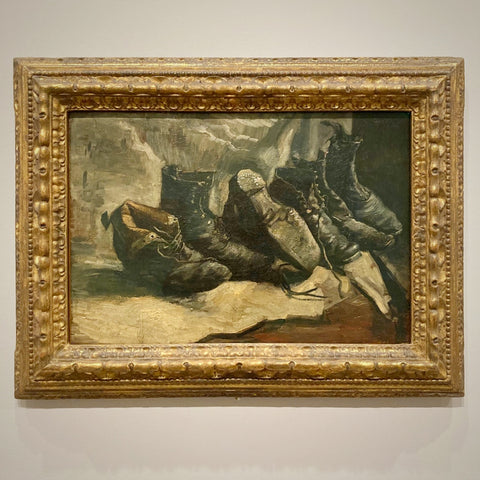
And then there's Vincent van Gogh. This unusual picture, titled Three Pairs of Shoes (1886-1887), is painted over an earlier picture of flamboyant flowers in a vase. This still life demonstrates the artist's alacrity with brushwork and composition—and seems to honor the humble honesty of the laborers who may have worn these boots.
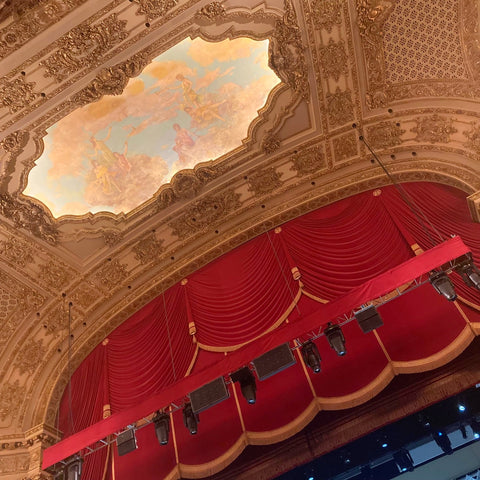
The evening—and my principle reason for visiting Boston—was to attend the premiere of my husband's ballet, Raymonda, at the Boston Ballet. He designed the sets and costumes. It was beautiful.
The venue, the Boston Opera House, began life in 1928 as a first-run movie theatre called the B. F. Keith Memorial Theatre. During its first year, it also staged vaudeville programs. In 1980, the movie house was converted into an opera house. Today it is the performing home of the Boston Ballet and touring productions of Broadway shows.
The ambitious and exuberant interior decor typifies the most flamboyant of the pre-war movie palaces. Going to the pictures was a glorious and glamorous event. Shown above, part of the stage's proscenium, house curtain and gilded ceiling.
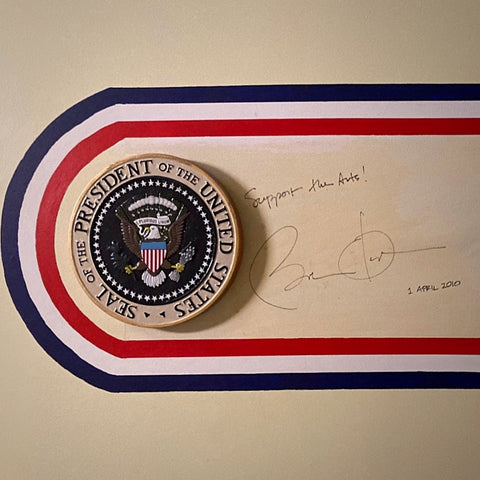
The backstage hallways of the theatre are signed by the casts of various Broadway shows which pass-through. In 2010, President Barack Obama visited the opera house—and indulged one hallway wall with his signature and a call to "Support the Arts!".
Though our Greenwich Village store is now permanently closed, LEO Design is still alive and well! Please visit our on-line store where we continue to sell Handsome Gifts (www.LEOdesignNYC.com).
We also can be found in Canonsburg, Pennsylvania, at The Antique Center of Strabane (www.antiquecenterofstrabane.com).
Or call to arrange to visit our Pittsburgh showroom (by private appointment only). 917-446-4248

